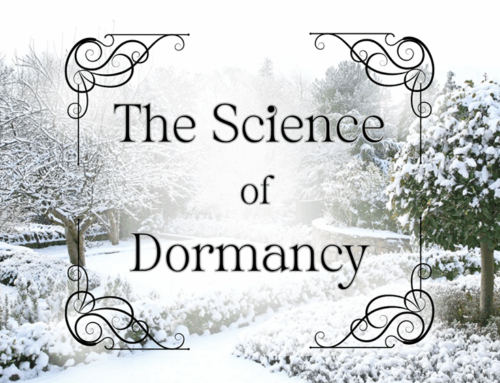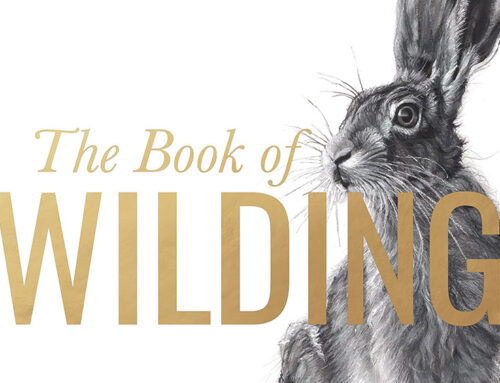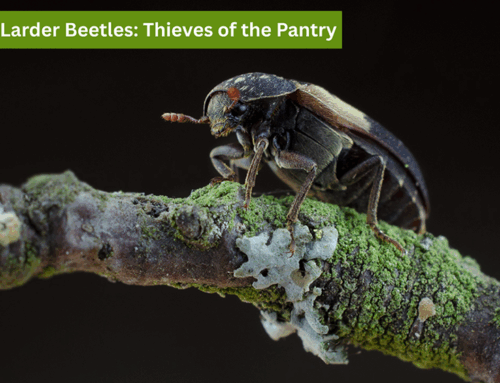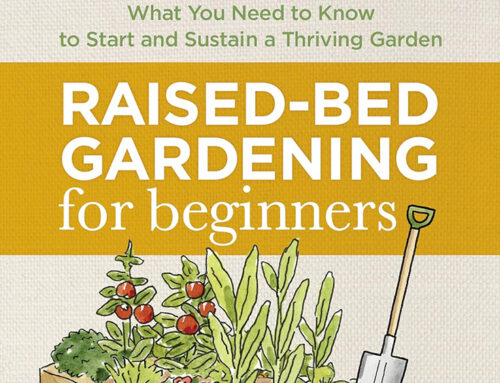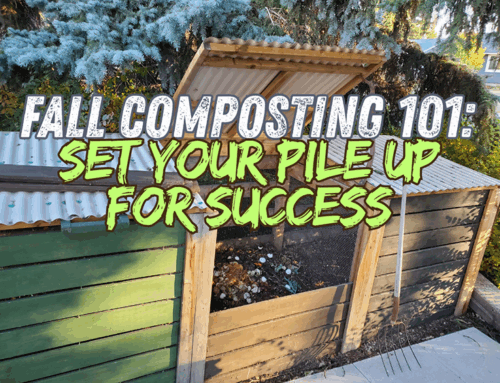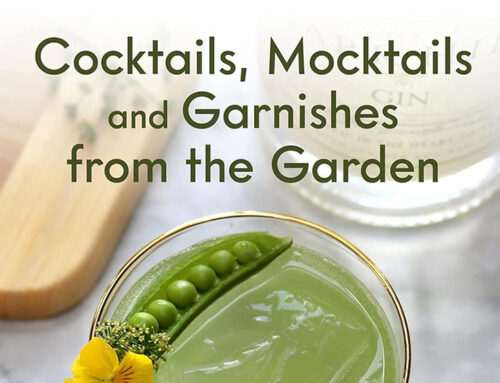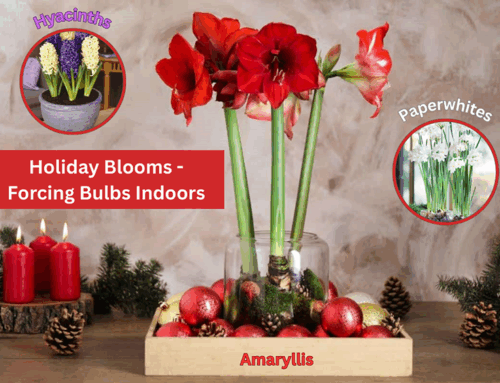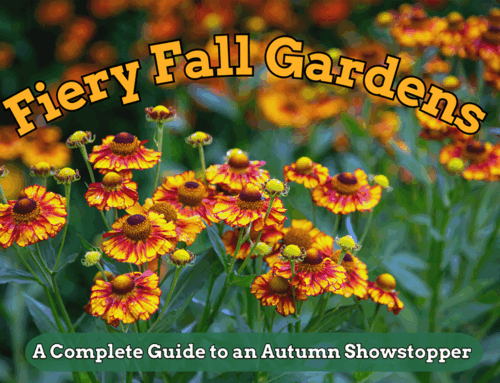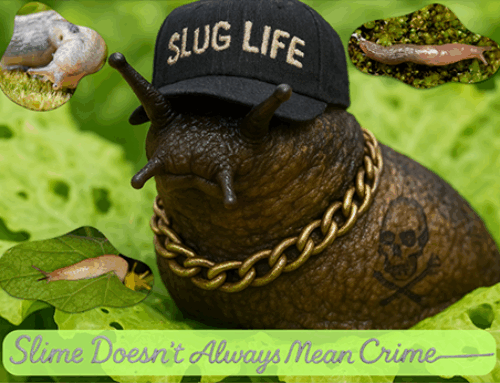Top Native Plants to Start from Seed
by Brett Kerley
Starting native plants from seed is a rewarding and ecologically powerful way to build a garden that thrives in Edmonton’s Zone 3/4 climate. Native species are adapted to our region’s long winters, dry summers, and variable soils. They support pollinators, birds, and beneficial insects. Once established, they ask for very little in return.
This guide covers ten of the best native plants to grow from seed in Edmonton, with details on their growth habits, sizes, bloom times, and specific germination needs. Whether you’re planting a prairie-style perennial bed, a pollinator patch, or a small-scale restoration, these plants will give you a strong foundation.
Why Start Native Plants From Seed?
- Cost-effective: Seeds are far cheaper than nursery plants.
- Greater genetic diversity: Seed-grown plants are more resilient and variable.
- Restorative: Helps reintroduce native species to urban and suburban landscapes.
- Rewarding: It’s deeply satisfying to grow a habitat from scratch.
Here Are My 10 Favourites
Purple Prairie Clover (Dalea purpurea)
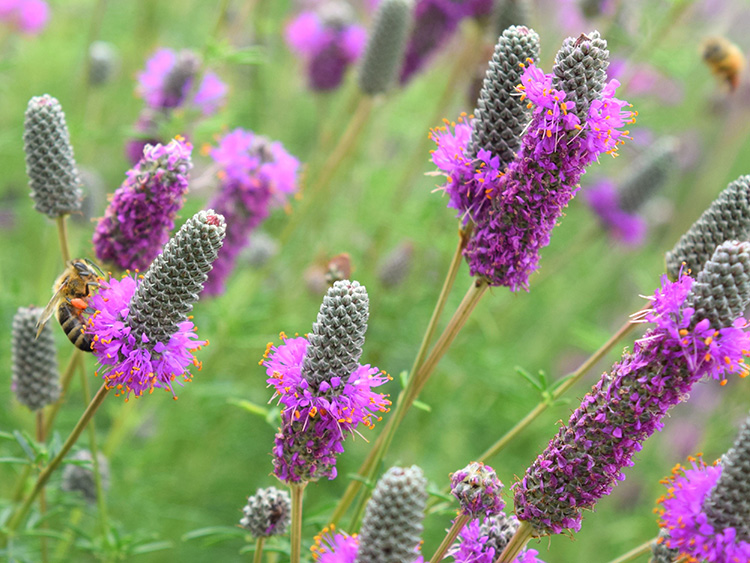
- Height: 30–60 cm (12–24″)
- Spread: 30–45 cm (12–18″)
- Habit: Upright, clumping legume with feathery foliage and striking purple flower spikes in mid-summer.
- Ecological Role: Nitrogen fixer; attracts native bees and butterflies.
How to Grow:
Scarify seeds (nick or soak in hot water for 24 hrs), then cold stratify for 30 days. Start indoors or sow outdoors in fall. Needs full sun and well-drained soil.
Wild Blue Flax (Linum lewisii)
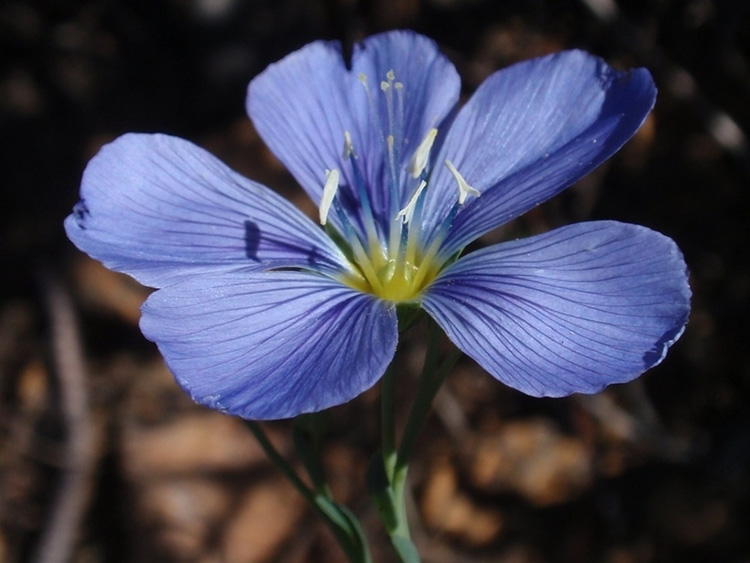
- Height: 30–60 cm (12–24″)
- Spread: 20–40 cm (8–16″)
- Habit: Upright, wispy perennial forming loose mounds with delicate sky-blue flowers.
- Ecological Role: Supports solitary bees; tolerates drought and poor soils.
How to Grow:
No stratification needed. Direct sow in spring or fall. Prefers full sun and sandy or well-drained soil.
Blanketflower (Gaillardia aristata)
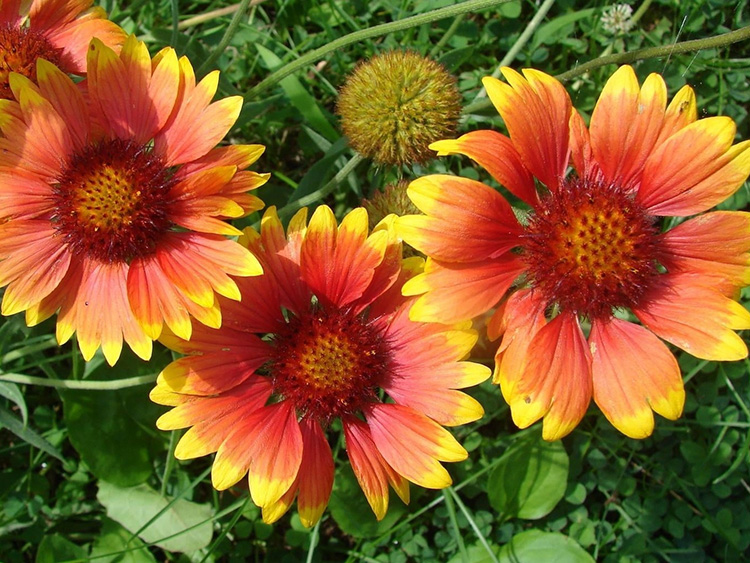
- Height: 30–70 cm (12–28″)
- Spread: 30–60 cm (12–24″)
- Habit: Clump-forming with upright flowering stalks and daisy-like red/yellow blooms from June to frost.
- Ecological Role: Pollinator magnet and seed source for birds.
How to Grow:
Press seeds into the soil surface (needs light). Fall sow or cold stratify for 30 days.
Western Yarrow (Achillea millefolium occidentalis)
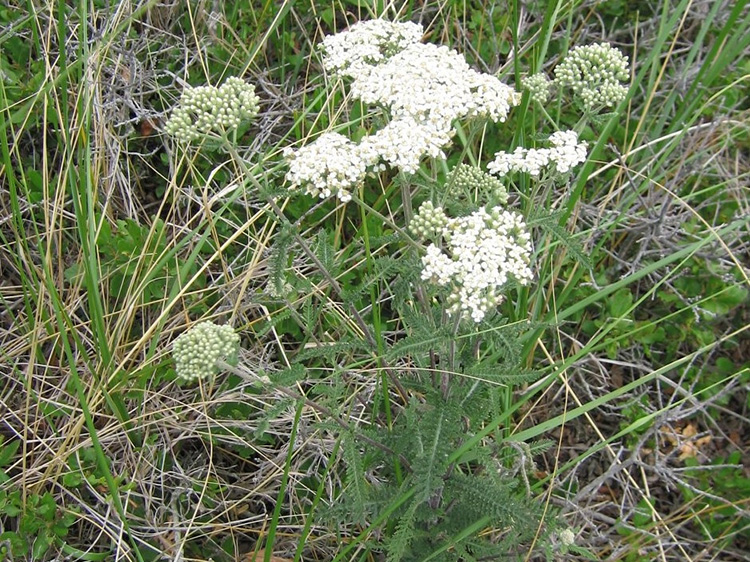
- Height: 30–60 cm (12–24″)
- Spread: 30–90 cm (12–36″)
- Habit: Spreading perennial with soft, fern-like foliage and flat-topped flower clusters.
- Ecological Role: Supports predatory insects and pollinators; erosion control.
How to Grow:
Surface sow—needs light. Cold stratify or direct sow in fall. Tolerates many soil types.
Showy Milkweed (Asclepias speciosa)
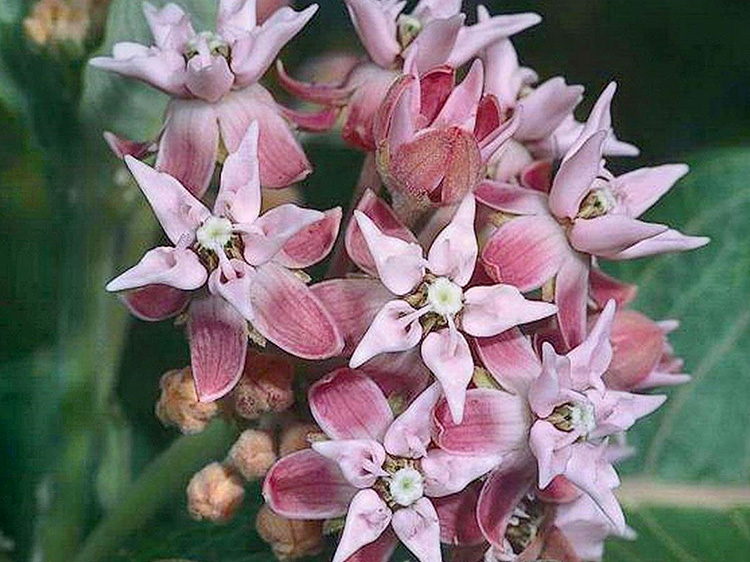
- Height: 60–150 cm (24–60″)
- Spread: 60–90 cm (24–36″); spreads by rhizomes
- Habit: Tall, upright with velvety leaves and fragrant pink flowers in summer.
- Ecological Role: Host plant for Monarch butterflies; nectar for many insects.
How to Grow:
Cold stratify for 30–60 days. Sow indoors in late winter or outdoors in fall. Requires full sun and room to spread.
Smooth Aster (Symphyotrichum laeve)
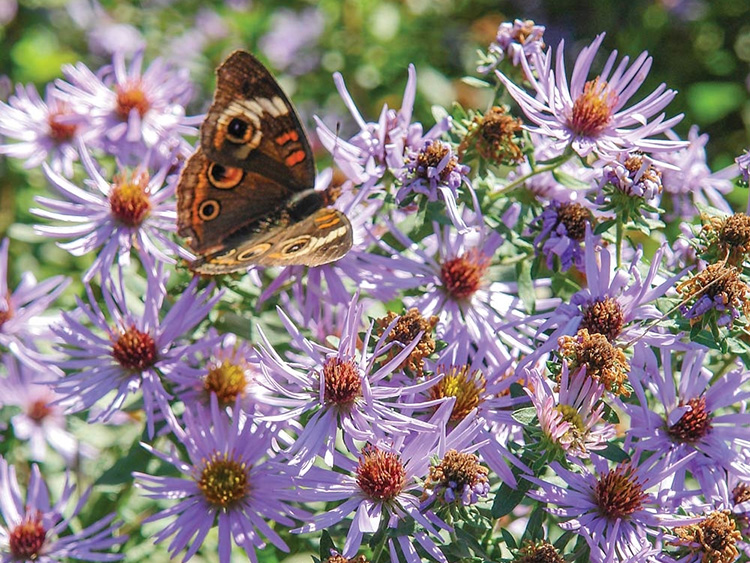
- Height: 60–90 cm (24–36″)
- Spread: 45–60 cm (18–24″)
- Habit: Upright and bushy, with branching stems and purple flowers in late summer/fall.
- Ecological Role: Critical late-season food for pollinators.
How to Grow:
Cold stratify 30–60 days. Start indoors or fall sow. Prefers full sun and good drainage.
Wild Bergamot (Monarda fistulosa)
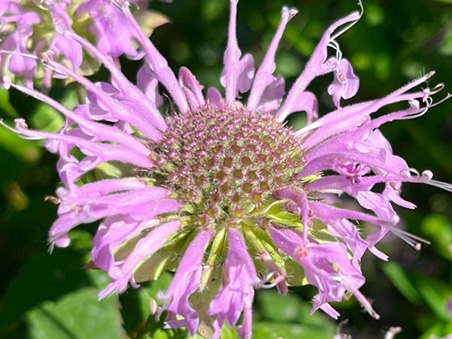
- Height: 60–120 cm (24–48″)
- Spread: 45–90 cm (18–36″); spreads by rhizomes
- Habit: Upright mint-family perennial with lavender “bee balm” flowers and aromatic leaves.
- Ecological Role: Attracts bees, butterflies, hummingbirds; deer-resistant.
How to Grow:
Stratify for 30 days or fall sow. Surface sow or lightly cover. Tolerates drought.
Blue Grama Grass (Bouteloua gracilis)
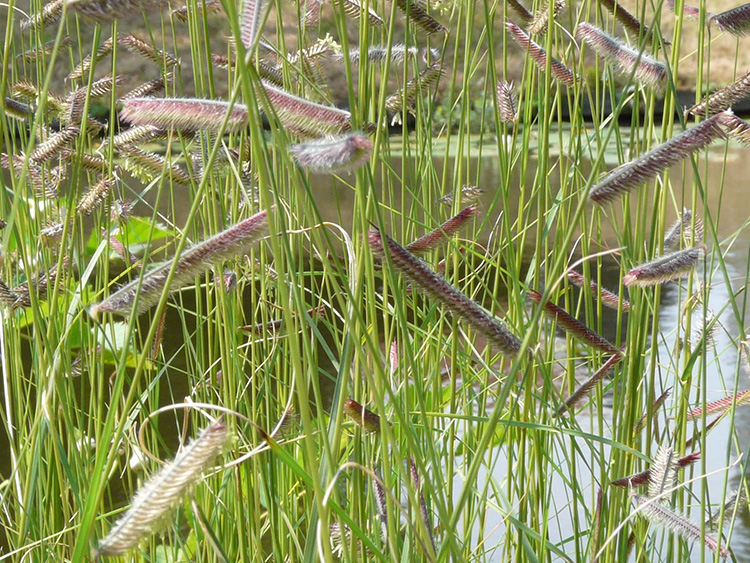
- Height: 20–40 cm (8–16″)
- Spread: 20–30 cm (8–12″); bunchgrass
- Habit: Low-growing and fine-textured with unique eyelash-shaped seed heads.
- Ecological Role: Good for soil stabilization and winter cover.
How to Grow:
No stratification needed. Sow in spring. Likes dry, open areas.
Prairie Coneflower (Ratibida columnifera)
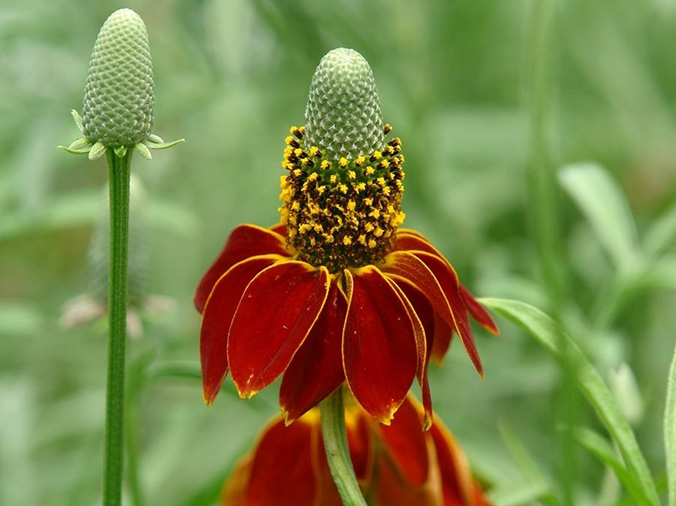
- Height: 45–90 cm (18–36″)
- Spread: 30–60 cm (12–24″)
- Habit: Upright with finely divided foliage and sombrero-shaped flowers in summer.
- Ecological Role: Pollinator-friendly and adaptable.
How to Grow:
Cold stratify or fall sow. Thrives in sandy or disturbed soils. Full sun is essential.
Goldenrod (Solidago rigida or S. canadensis)
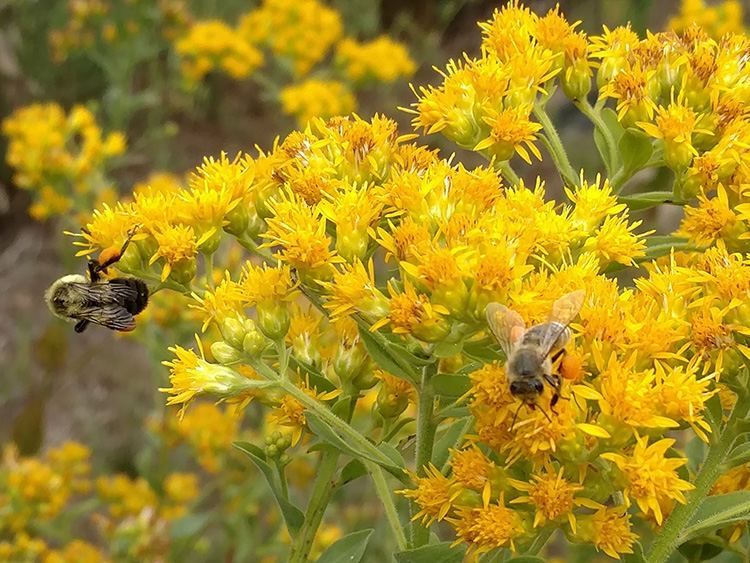
- Height: 60–150 cm (24–60″)
- Spread: 60–90 cm (24–36″); rigida clumps, canadensis spreads
- Habit: Tall, upright with golden flower clusters in late summer/fall.
- Ecological Role: Supports 100+ insect species. Essential late-season food.
How to Grow:
Surface sow; needs light. Cold stratify or fall sow. Plant in full sun.
Tips for Growing Native Plants from Seed
Cold Stratification
 Many natives need cold, moist conditions to break seed dormancy.
Many natives need cold, moist conditions to break seed dormancy.
How to do it:
- Mix seeds with moist sand or paper towel in a bag.
- Refrigerate for 30–90 days (not freezer).
- Or sow outdoors in fall and let nature handle it.
Sow Shallowly
- Many seeds need light to germinate—press onto the soil surface.
- For tiny seeds, mix with fine sand to spread more evenly.
Choose the Right Time
- Fall sowing (Sept–Nov): Best for most species.
- Indoor sowing (Jan–March): Works well for controlled environments.
- Spring sowing (May–June): Suitable for quick-growing grasses and annuals.
Soil and Containers
- Use gritty or sandy soil, not rich potting mixes.
- Ensure excellent drainage—most native plants hate soggy roots.
Water Gently
- Use a fine mist spray during germination.
- Don’t let surface-sown seeds dry out.
- Once established, most native plants are drought-tolerant.
Label Everything
- Germination is often slow—don’t mistake slow growers for failure!
- Include sowing date, stratification method, and species name.
Transplant Carefully
- Harden off seedlings gradually.
- Plant out after the last frost, ideally on a cloudy day.
- Water deeply after transplanting.
Don’t Over-Fertilize
Native plants evolved in poor soils. Fertilizing can lead to floppy, stressed plants with fewer flowers.
9. Watch for Weeds
Weeds outcompete young natives. Use mulch or careful hand-weeding in early stages.
10. Try Winter Sowing in Containers
A great option using recycled milk jugs as mini greenhouses:
- Fill with 7–10 cm (3–4″) of moist soil
- Sow seeds, label, and leave outside over winter
- Nature provides stratification and sun when it’s time
Where to buy the seeds? Edmonton/Alberta/Canadian Vendors
| Vendor | What They Offer |
|---|---|
| ALCLA Native Plants (Carstairs, AB) | Specialises in Alberta-native perennials, grasses, and shrubs grown from locally sourced seed. Offers both seeds and live plants. Order online or arrange pickup during the growing season. Visit ALCLA |
| Wild About Flowers (Alberta) | Grows native wildflowers, grasses, and shrubs for prairie landscapes. Offers seed packets and plugs. Visit Wild About Flowers |
| Northern Wildflowers (Ontario) | Family-run seed company focusing on northern-climate native species. Ships across Canada. Great selection of seed mixes and single species. Visit Northern Wildflowers |
| Prairie Originals (Manitoba) | Well-known supplier of prairie wildflower seeds, native grasses, and themed seed mixes. Also offers live plugs. Visit Prairie Originals |
| Prairie Seed Shop Canada | Excellent selection of native plant seed packets and custom blends. Visit Prairie Seed Shop |
| EcoLogic Horticulture | Offers curated native seed mixes and restoration-focused plant options. Visit EcoLogic Horticulture |
| Arnica Wildflowers (Edmonton) | Grows and sells native perennials from untreated, locally collected seed. Check their Facebook or the ENPS vendor list for upcoming sales. |
| Medieval Manor Gardens (Parkland County, AB) | Native and hardy perennials, many grow Visit Medieval Manor |
Final Thoughts
Growing native plants from seed is a slow, satisfying, and impactful process. These hardy, beautiful plants provide food and shelter for local wildlife, adapt well to Edmonton’s climate, and bring dynamic texture and colour to your garden.
You don’t have to convert your whole yard—just one patch of native plants can make a big difference. Start small, experiment, and enjoy watching your ecosystem grow from the ground up.
Now go forth and sow chaos—beautiful, pollinator-friendly chaos.



